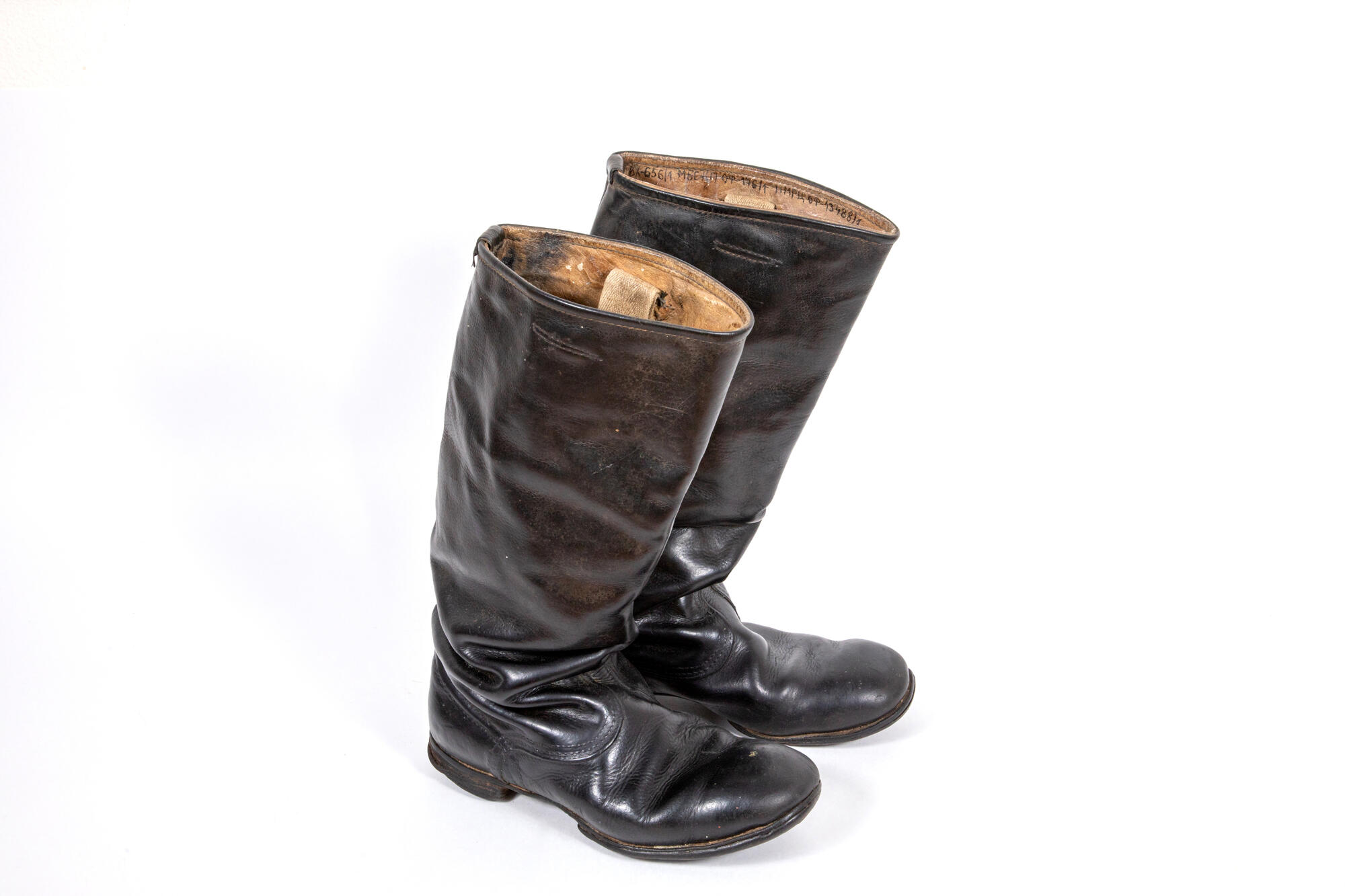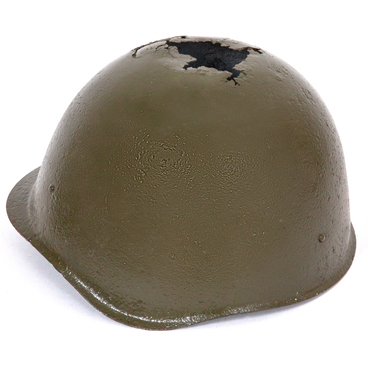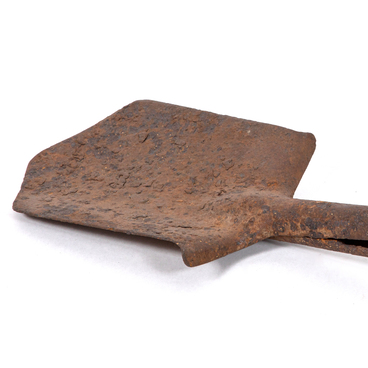The black chrome-tanned boots, displayed in the exhibition, belonged to a participant of the Great Patriotic War — Junior Lieutenant Arkady Tulupov, who was awarded the Order of the Patriotic War, 2nd class and the medal “For the Liberation of Prague”.
Chrome-tanned leather was a name for the soft leather that was processed with chromium-potassium and chromium-sodium alums. After 12 hours of chrome tanning in special rotating drums, the leather became light, elastic, and durable. While wearing chrome-tanned boots, soldiers would not sweat too much and the thermoregulatory processes in their feet would not be disturbed.
Boots made of chrome-tanned leather as an item of the military uniform were described in the appendix to the circulaire of the Head of Main Intendant Directorate of the Red Army No.13 dated from June 30, 1941, “On the military uniform of the commanding officers of the Workers' and Peasants' Red Army, 1941”. The rank “commanding officers” included all the officers of the Red Army — from junior lieutenants to generals and marshals.
During the Great Patriotic War, the style of the uniform and the correct way of wearing it were determined by the order issued on December 17, 1936: “On the uniforms of junior and senior commanding officers of the ground forces and aviation”. According to the order, boots were part of the summer and winter variations of all types of uniforms for officers and soldiers: service, ceremonial (parade), and field uniforms. Officers wore leather jackboots, and soldiers wore boots with puttees or kirza boots (kirza is a thick multi-layered cotton fabric).
In January 1943, when the order “Rules regarding the uniform for the Red Army personnel” was issued, chrome-tanned boots became the main type of footwear for commanders in autumn, summer, and spring. Re-enlistees were provided with yalovka leather boots (yalovka leather was made from the skins of young calves or heifers), although some preferred to get custom-made chrome boots. Red Army soldiers were also allowed to wear shoes made of simpler materials, such as yuft (“Russia leather”) or yalovka leather. By the end of the war, many soldiers switched to kirza boots and canvas boots.
Footwear was very important in the Red Army — that can be proved by the extracts from the order:
Chrome-tanned leather was a name for the soft leather that was processed with chromium-potassium and chromium-sodium alums. After 12 hours of chrome tanning in special rotating drums, the leather became light, elastic, and durable. While wearing chrome-tanned boots, soldiers would not sweat too much and the thermoregulatory processes in their feet would not be disturbed.
Boots made of chrome-tanned leather as an item of the military uniform were described in the appendix to the circulaire of the Head of Main Intendant Directorate of the Red Army No.13 dated from June 30, 1941, “On the military uniform of the commanding officers of the Workers' and Peasants' Red Army, 1941”. The rank “commanding officers” included all the officers of the Red Army — from junior lieutenants to generals and marshals.
During the Great Patriotic War, the style of the uniform and the correct way of wearing it were determined by the order issued on December 17, 1936: “On the uniforms of junior and senior commanding officers of the ground forces and aviation”. According to the order, boots were part of the summer and winter variations of all types of uniforms for officers and soldiers: service, ceremonial (parade), and field uniforms. Officers wore leather jackboots, and soldiers wore boots with puttees or kirza boots (kirza is a thick multi-layered cotton fabric).
In January 1943, when the order “Rules regarding the uniform for the Red Army personnel” was issued, chrome-tanned boots became the main type of footwear for commanders in autumn, summer, and spring. Re-enlistees were provided with yalovka leather boots (yalovka leather was made from the skins of young calves or heifers), although some preferred to get custom-made chrome boots. Red Army soldiers were also allowed to wear shoes made of simpler materials, such as yuft (“Russia leather”) or yalovka leather. By the end of the war, many soldiers switched to kirza boots and canvas boots.
Footwear was very important in the Red Army — that can be proved by the extracts from the order:



